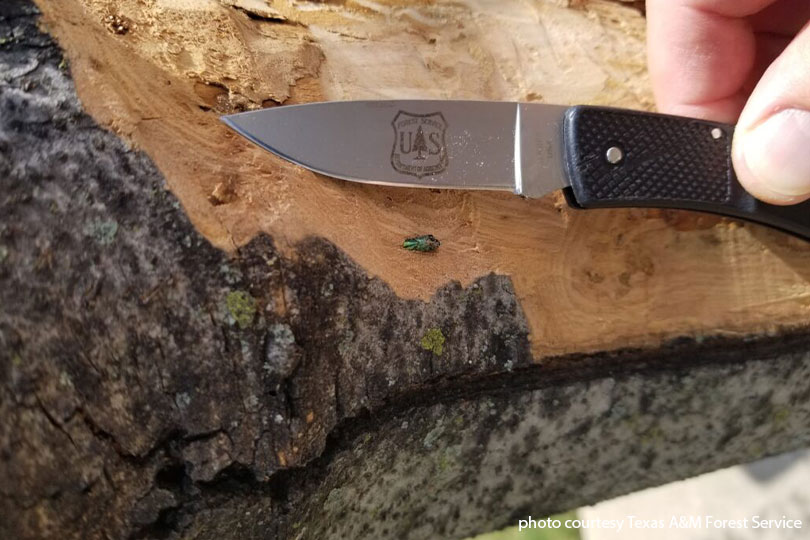By Shelby Shank
Field Editor
Rapid spread of the emerald ash borer (EAB) has foresters and communities on alert as the invasive insect moves south.
“The continuous spread of EAB is a great concern for our ash tree population,” Allen Smith, Texas A&M Forest Service regional forest health coordinator, said. “EAB has the potential to wipe out ash as a component of North America’s forests, meaning no more ash trees period.”
EAB is an invasive beetle species from Asia first detected in Detroit, Mich. in 2002.
It was first discovered in Northeast Texas in Harrison County in 2016 and has spread to 23 additional Texas counties since then.
Ash borer adult beetles are small, green-metallic-colored insects that move steadily over time to new ash trees.
The female beetles lay eggs inside the crevices of the bark of trees.
When the eggs hatch into larvae, they burrow inside the tree, causing the most damage to the tree. The larvae build galleries below the bark of the tree and cut off supply of water and nutrients for the tree, causing the tree to die from the top down.
Tree mortality from EAB can be 100% in areas if detection is not found early.
It can take many years to detect EAB infestations and most trees will die within two to five years after an infestation without proper proactive measures.
Symptoms of infestation include thinning of leaves and upper tree canopy, as well as fewer leaves and more exposed branches.
Both healthy and stressed trees are vulnerable to an EAB infestation.
Protective insecticidal treatments can be applied to protect ash trees in areas with known infestations.
Confirmed trees with EAB infestations should be removed and destroyed to avoid new beetles from emerging.
Once the invasive insect is confirmed in a county, the Texas Department Agriculture (TDA) assumes regulatory responsibility of the issue and establishing quarantines.
Mandatory quarantine regulations by TDA restricts movement of any woody ash material exiting the county or quarantined area to slow the spread of the beetle.
“Because EAB is transported unintentionally on firewood and wood products, the quarantine helps slow the beetle’s spread by restricting the movement of wood in and out of affected areas,” Demian Gomez, Texas A&M Forest Service regional forest health coordinator, said.
Ash firewood should also not be transported to avoid introduction of the beetle in new counties.
Residents of adjacent counties are encouraged to monitor their ash trees for signs of infestations. One of the most telling signs of EAB are their distinct D-shaped exit holes and the zig-zag galleries of larvae.
“There is no known way to stop the spread of EAB,” Gomez said. “But communities can minimize loss, diversify their tree species and increase the health and resiliency of urban forests.”


Leave A Comment